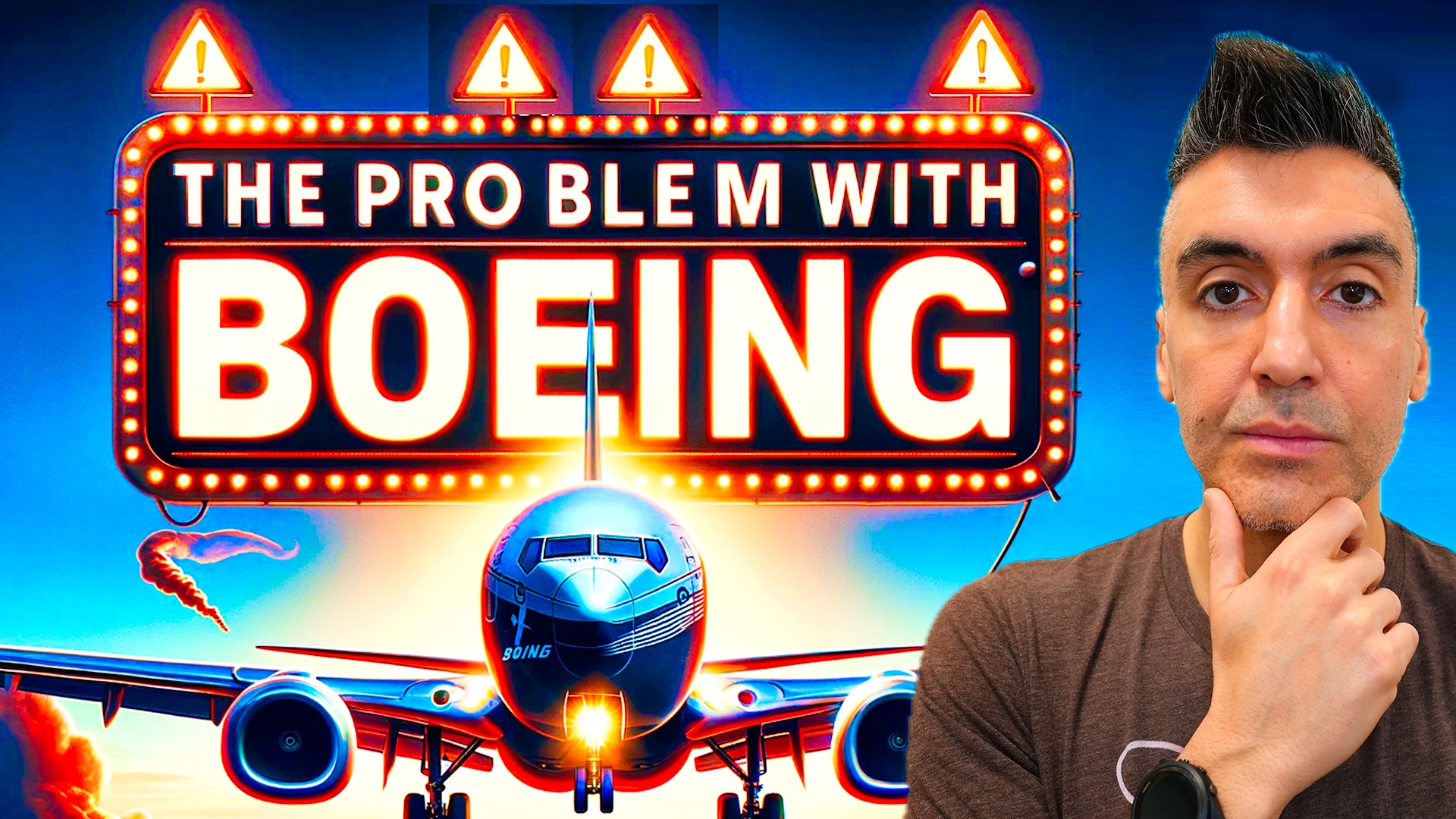You’ve probably seen the images from Alaska Airlines flight 1282 where a section of the plane was blown out in mid-flight. Fortunately, the plane was able to make an emergency landing and aside from 3 minor injuries nobody else was hurt or killed. Still, this was a brand new Boeing 737 Max 9 – only in service for 3 months before this incident – but since the Max line of planes was introduced, there have been two fatal crashes.
What is going on with Boeing and should you be worried about flying in their planes?
Safe But Less Safe
Previous generations of Boeing 737s have a fatal accident rate of .2 per million flights while the 737 MAX have a 4 in million fatal accident rate, still safe, but twenty times more accident prone. The Boeing 737 line is the most popular passenger plane ever – beginning production in 1968 through the latest generation called MAX which began in 2017. Throughout much of that history Boeing was the dominant jetliner manufacturer. Boeing’s main rival Airbus wasn’t a serious rival to Boeing until the 1990s.
In the 2000s Airbus overtook Boeing in the narrow body aircraft market and today Airbus has 62% of the share of airliner backlog. Their main advantage: fuel economy.
Savings In The Sky
In the 2010s Airbus starting using a new engine design using with what’s known as high-bypass. Technical details aside, these are engines that are bigger than what was previously being used but 25% more fuel efficient. (And 35% quieter, a nice bonus.) Before this jetliner engines were made to be narrower thinking it would reduce wind resistance.
Over time airlines began gravitating toward these narrower, smaller capacity planes because they saved money on fuel. Those cost savings meant that airlines could run more flights versus the larger Boeing planes which burn more fuel. It’s easier to fill up smaller planes resulting in fewer empty seats. Again, economic benefits.
Boeing Plays Catch Up
Boeing isn’t able to put those newer more fuel efficient engines on their existing larger planes because the wings are too low for them to fit. This leads to the decision to make the Boeing MAX, their version of a narrow body jetliner to compete with Airbus. Building planes takes experience and Boeing didn’t redesign the 737 Max from scratch. The larger more powerful engines being placed on modified existing designs have lead to issues. Boeing had to put the new engines further forward on the wings of the MAX but combined with more thrust they have a tendency to pull the plane up more – in other words give it more lift.

To compensate, the Maneuvering Characteristics Augmentation System (MCAS) was implemented. That’s basically a computer than detects when the nose of the plane might be going up too high and then forces the plane to pitch downward. Boeing engineers allowed the MCAS to be fed information from a single sensor with no redundancy because “they calculated the probability of a “hazardous” MCAS malfunction to be virtually inconceivable.”
The Federal Aviation Administration also agreed and did not adequately inform pilots about the MCAS in their manuals. Unfortunately in the case of Lion Air Flight 620 in 2018 and Ethiopian Airlines 302 in 2019 that lead to two fatal crashes, killing 346 people. Boeing was later charged with fraud and ordered to pay compensation of 2.5 billion dollars for concealing information from the FAA.
Failures For Dollars
There were failures on the part of Boeing and the FAA, who overruled their own engineers in the regarding the 737 MAX 8 and there have been well documented quality control issues with the MAX 9 (the plane involved in the Alaska Airlines incident). A U.S. House Committee on Transportation and Infrastructure report also pointed to the FAA’s practice of delegating some of its inspection functions to Boeing’s own engineers, noting that this structure “creates inherent conflicts of interest that have jeopardized the safety of the flying public.”
The grounding of the MAX 8 cost Boeing 21 billion dollars. Still, the 737 MAX 8 and 9 still have 4500 orders combined so far but it seems like Boeing’s push to make a profit – which that haven’t done since 2019 – has lead to cutting corners in their race to compete with Airbus. Travelers can only hope there are no more accidents before oversight of Boeing, investigations, and changes both to personnel and production are implemented.
